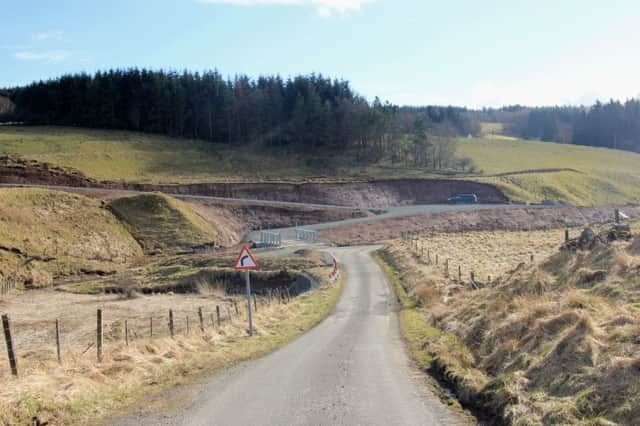Planting the seeds for a diverse future


Something remarkable is stirring in the Ochil Hills, where more than 1.3 million trees are being planted to create one of the largest and most diverse modern forests in Scotland.
The new forest at Jerah, on the border of Stirling, Clackmannanshire and Perthshire, will see 16 different tree species planted on a former 1,000-hectare sheep farm above Menstrie.
Advertisement
Hide AdAdvertisement
Hide AdIt will create jobs and deliver high-quality timber to Scotland’s successful sawmilling and panel board sector, as well as tackling climate change and encouraging biodiversity.
It will also create a new “amenity woodland” for people in Menstrie and further afield to enjoy in years to come. The woodland design retains public access routes for walkers and fell runners and flight paths for the local paraglider club. Panoramic viewpoints of the Forth Valley have been maintained, as well as views of historic farmsteads within the site and elsewhere in Menstrie Glen.
Few, if any, other sectors can deliver simultaneously such a wide range of economic, environmental and social benefits – yet the path to delivering this modern, mixed-species forest was far from smooth. It took 19 different planting designs before the balance of the proposal, facilitated by experienced firms FIM and UPM Tilhill, was deemed right for the area – and more than two years of wide-ranging consultation and detailed environmental impact assessments. Such a long process, with uncertain outcomes, acts a severe disincentive to applicants.
At Jerah’s heart will be a productive forest, but it will also be one of the biggest “native” planting schemes of recent years, with 30 per cent of the new woodland either “native” or “amenity” species.
This is the face of modern forestry – an attractive balance of mixed tree species to encourage biodiversity and deliver a sensible, sustainable balance between society, economy and environment.
More than 50 contractors, most from the local area, will create the forest over the next six months – cultivating the ground, planting and fencing. Five full-time equivalent jobs will remain after planting.
The 1.3 million trees will sequester an estimated 183,000 tonnes of CO2 in one rotation of the forest (around 40 years), making a significant contribution to the Scottish Government’s climate change targets. This is equivalent to the annual CO2 emissions from 80,000 homes.
Biodiversity benefits include reinforcing and expanding native woodland habitat corridors along various watercourses and maintaining pre-thicket woodland for a range of species including black grouse.
Advertisement
Hide AdAdvertisement
Hide AdThe area’s cultural history was a key consideration. Following discussions with the regional archaeologist, the project will fund research into the remains of 16th and 17th century farmsteads within the forest, in partnership with the University of Stirling.
Unfortunately, while the Jerah project shows the way forward, it is unusual. Very little new planting is happening in Scotland’s hill areas – and productive planting must be stepped up if the Scottish Government is to meet its stated targets.
Scotland has approximately 18 per cent forest cover (the European average is 36 per cent) and the UK is the world’s third biggest net importer of timber. Most imported wood is softwood for the construction sector, which could and should be grown here.
Jerah also indicates the options available to those who own and work in Scotland’s upland areas. A report commissioned by Confor last year, focused on Eskdalemuir in southern Scotland, demonstrated the opportunities provided by new woodland in marginal hill farming areas. Planting trees is often more attractive in terms of economic growth, profitability and sustainability in rural upland communities, and can provide shelter for livestock, improving animal welfare and productivity.
The creation of the forest above Menstrie has also had good local support – so why do we make it so hard for an activity that ticks so many boxes? It can take up to three years for a new forest to be granted approval for planting with substantial costs associated with the environmental impact assessment process.
While there is an increasing level of understanding among politicians of the range of benefits forestry delivers, this is often not known at local level. It is hoped that an appreciation of modern forestry design and the societal benefits that a new mixed forest provides, will see unnecessary barriers being lowered.
As a sector, we are prepared to go the extra mile to create modern, productive forests that deliver multiple benefits – but we need people to give us the time to explain what we are doing and not simply recycle outdated perspectives. If they do that, our society, our economy and our environment will all benefit.
• Stuart Goodall is chief executive of Confor: promoting forestry and wood www.confor.org.uk
SEE ALSO